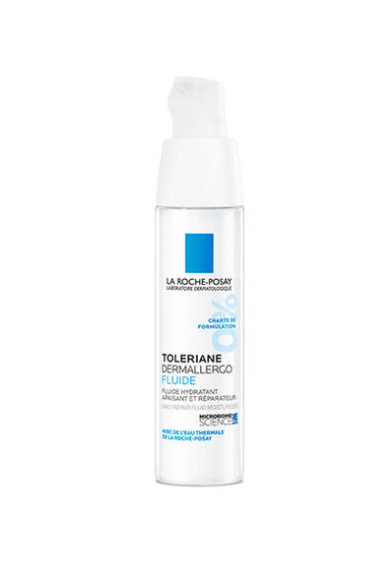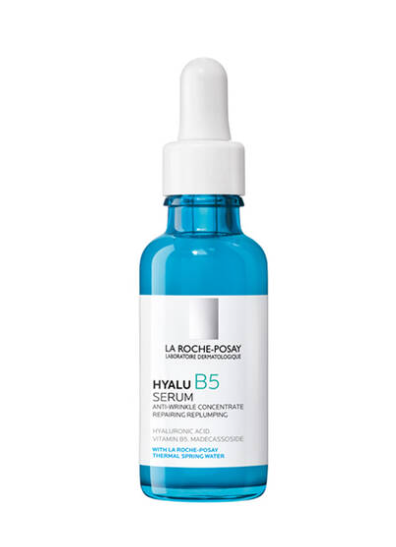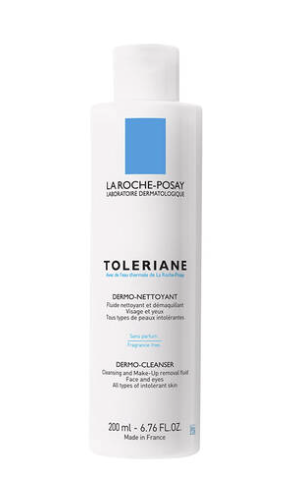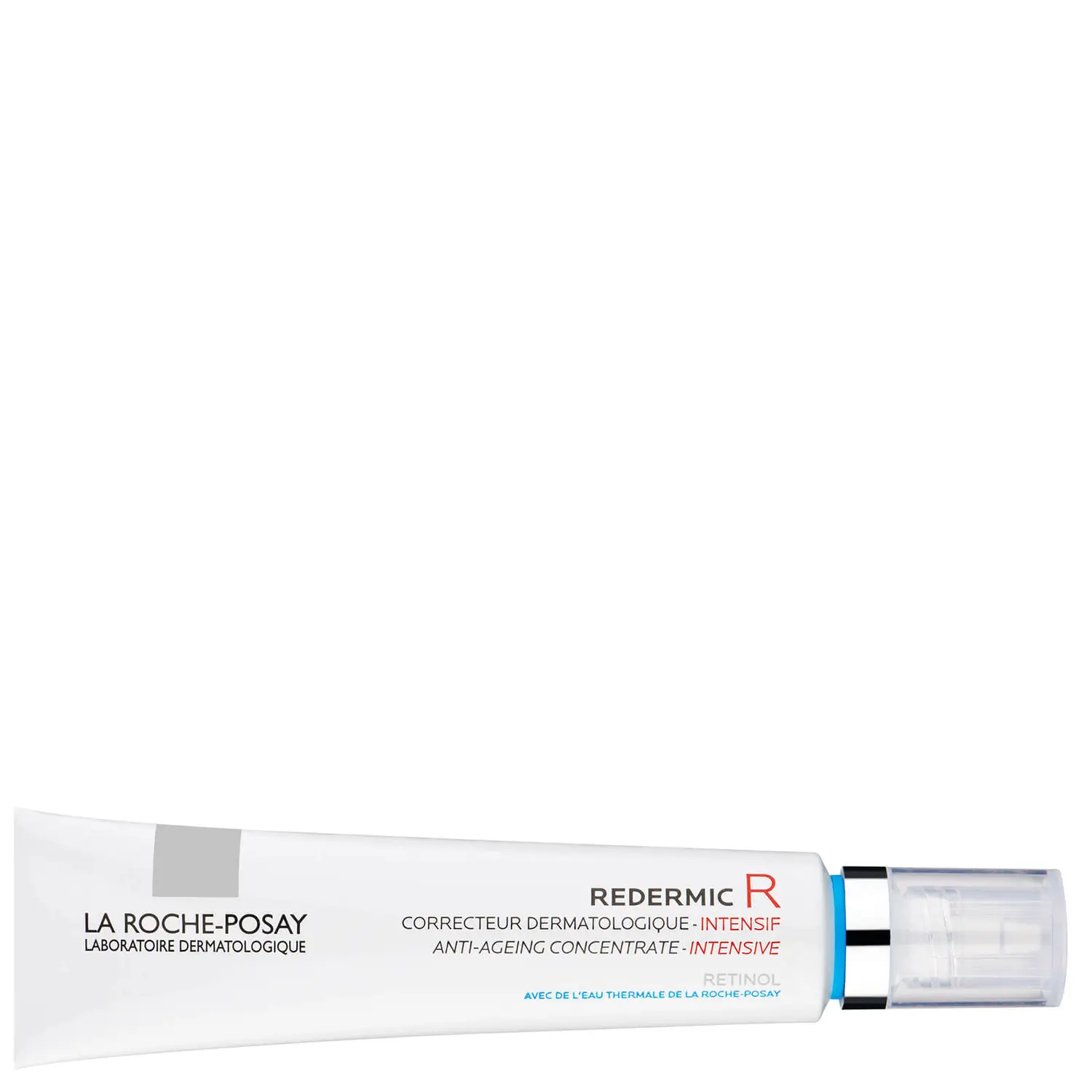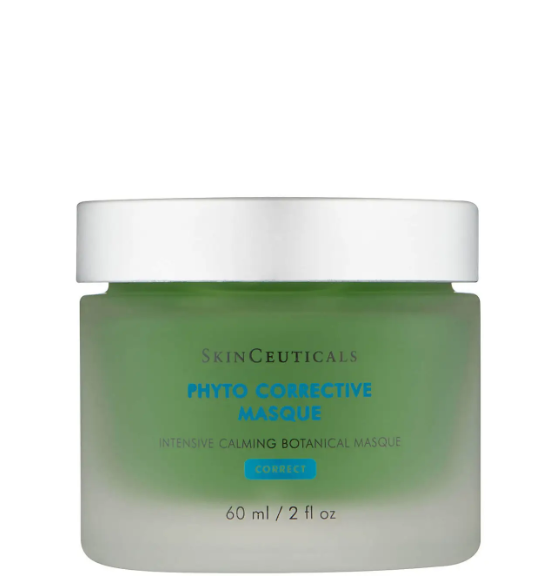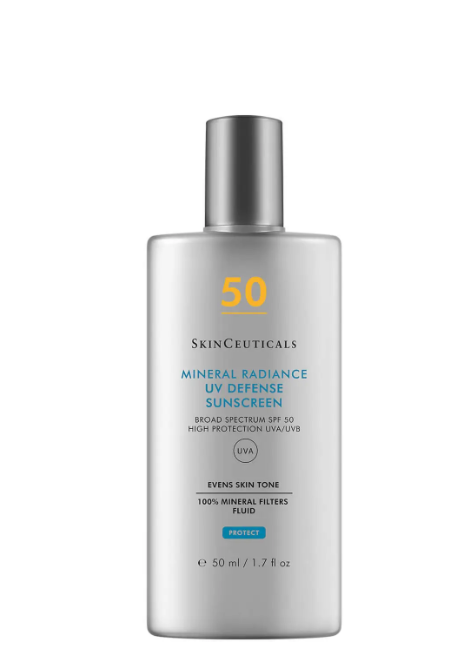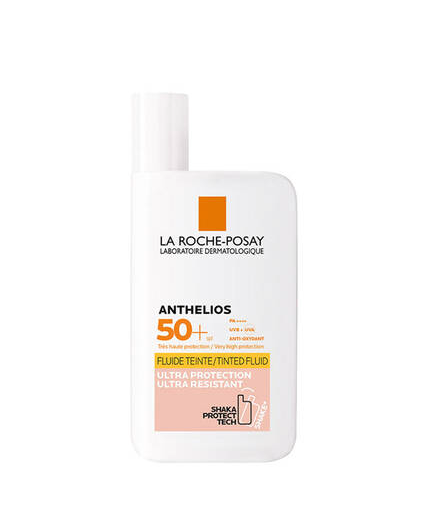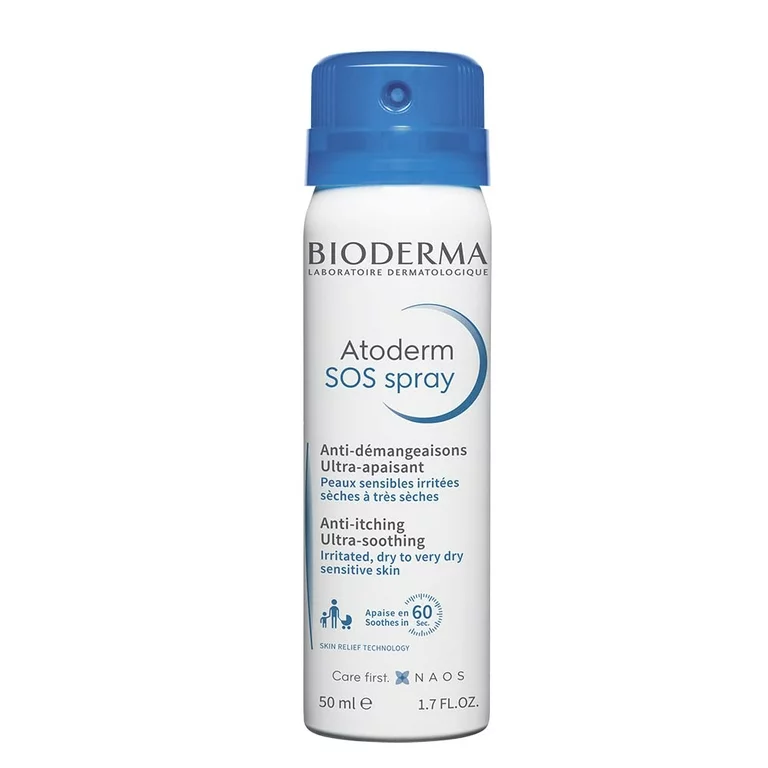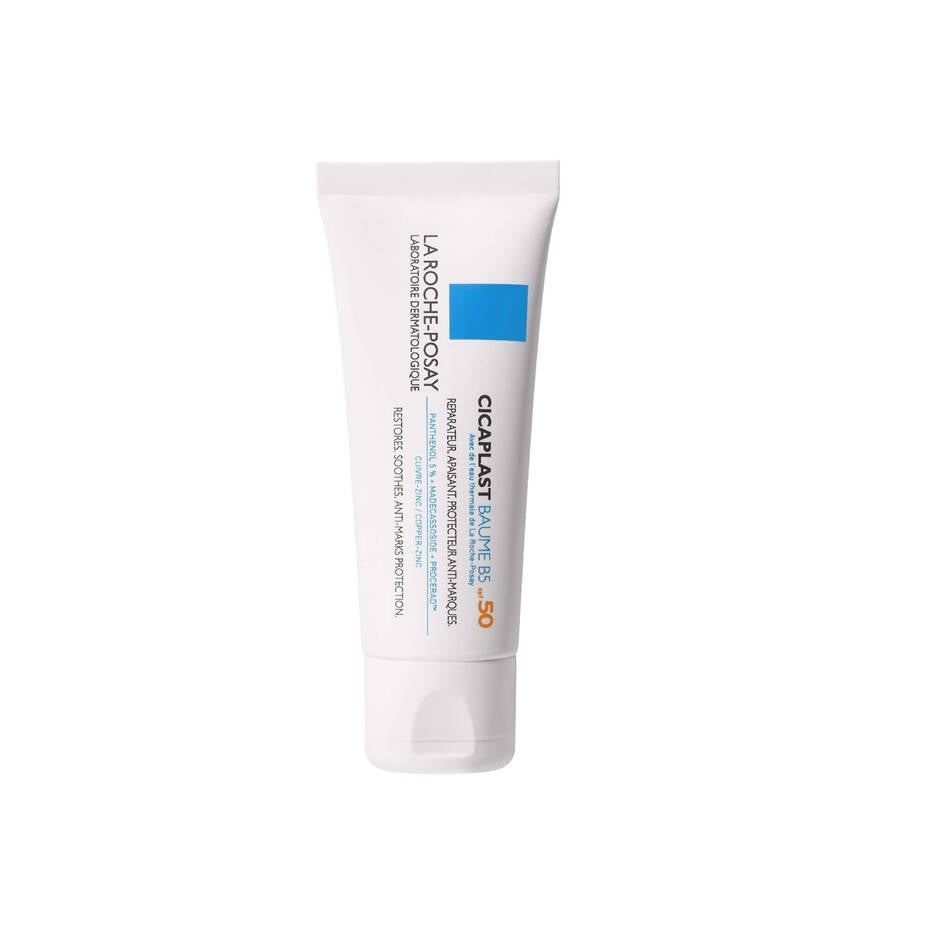I have many vivid memories of growing up with pink-toned skin, but some really stick out. I played a lot of sports at school and I remember wondering why my face would go so red compared to other girls in my class but, as my family had similar complexions, I brushed it off. When I went to university, nights out would be cut short by trips to the bathroom to splash cold water on my red hot, pulsating face. Arriving late to a crowded lecture hall would trigger a flush that would last for hours, and staying in for a big takeaway with my flatmates would result in a swollen face peppered with pustules.
AdvertisementADVERTISEMENT
I was at a loss. I’d never had “bad” skin. In fact, I had never even considered a skincare routine. I assumed the excessive redness must be an allergic reaction or an infection of some kind — something short-term and easily fixed. So you can imagine my surprise when the university GP explained, “It’s rosacea — and there isn’t a cure.”
What causes rosacea?
According to London-based consultant dermatologist Dr Justine Kluk, rosacea is a long-term skin condition associated with facial redness and flushing. “It often appears in the 30s and is more prevalent in those with fair skin,” she explains. So what causes it? “There are a number of factors believed to contribute to the development of rosacea,” Dr Kluk continues. “These include genetics, blood vessel abnormalities, hormonal influences, microorganisms and diet. But it is so much more than just a red face.”
Broadly speaking, Dr Kluk identifies four different types of rosacea, which may overlap: erythemato-telangiectactic rosacea (redness, flushing and dilated blood vessels), papulopustular rosacea (acne-like breakouts), phymatous rosacea (skin swelling and thickening, e.g. of the nose) and ocular rosacea (gritty eyes and swollen lids). “It often begins with a tendency to flush or blush more easily,” says Dr Kluk. “With time, sufferers may develop permanent redness of the nose and cheeks along with a multitude of other unpleasant symptoms, such as pimples, skin dryness and scaling, burning and stinging, and sensitivity to multiple skincare products.”
How do you treat rosacea on your face?
AdvertisementADVERTISEMENT
Over time, I found GPs and dermatologists who were kind, empathetic and informative about my rosacea. But sadly, my initial journey through rosacea was a lonely one. After my first GP appointment, I felt devastated. I left with little to no information, a medicated gel (which felt like it was burning through my skin and subsequently made everything worse) and feeling like I’d wasted the doctor’s time with something so superficial.
Nowadays, however, you can’t open an internet browser without stumbling across a makeup artist, blogger or dermatologist sharing tips on the best skincare and makeup for multiple skin concerns, rosacea included. But back in the early 2000s we were limited to friends, family and magazines, and a lot of the advice was subjective. I didn’t know anyone else with a skin condition and I couldn’t tell anyone how I really felt about my skin. I did a lot of research online and eventually found some American forums where “normal” people like me listed their rosacea successes and failures. This put me on the long road to finding my triggers.
Dr Kluk pinpoints exposure to sunlight, strong winds, stress, strenuous exercise, caffeine, alcohol and spicy food as some potential factors. Over the past 14 years, I’ve changed almost every aspect of my life in order to work around my rosacea: my diet (less alcohol, very minimal dairy, less sugar), not to mention my lifestyle (no hot showers or baths, minimal heat styling and avoiding extremes of temperature). I’ve also learned to manage my mental health, such as work and social stress and dealing with self-esteem issues, and I started a rosacea-focused blog because I wanted to provide the information and support that I didn’t receive 14 years ago.
AdvertisementADVERTISEMENT
Then there’s the skincare. My skin thrives on simplicity and consistency. As well as rosacea I have seborrheic dermatitis, so the products I use really have their work cut out for them! I have long been a French pharmacy beauty products obsessive and brands like La Roche-Posay, Avène and Bioderma have always featured very heavily in my routine. While my specific regime may not work for everyone with rosacea, here’s what really does help.
My evening rosacea skincare routine
In the evening, I cleanse using La Roche-Posay Toleriane Dermo-Cleanser, £15, which removes makeup without leaving my skin feeling tight or hot. I follow with a hyaluronic acid serum like La Roche-Posay Hyalu B5 Hyaluronic Acid Serum, £45, and a simple moisturiser like La Roche-Posay Toleriane Ultra Fluid, £21. At 35, I’m beginning to spot the first signs of ageing, so I also include a low-level retinol twice a week. I’ve raved about La Roche-Posay Redermic [R] Anti-Wrinkle Retinol Treatment, £36, in the past but I’ve recently been using Medik8’s Crystal Retinal 6, £45, and love it.
Retinol (and its fellow vitamin A derivatives) can be transformative for the skin but, like most ingredients when you have rosacea, they need a lot of research and you have to be careful with use, as it can result in skin sensitivity, including purging, flaking and more redness. If you're struggling to get your skincare routine right, it might be a good option to visit a qualified dermatologist. You can check if they are on the General Medical Council register here.
AdvertisementADVERTISEMENT
shop 5 products
My morning rosacea skincare routine
I typically use the same cleanser, serum and moisturiser as in my evening routine, followed by the most important step: SPF. I’m very picky about SPF as it must work under makeup and can’t leave my skin feeling smothered. My all-time favourite is La Roche-Posay Anthelios Ultra Light Fluid 50+, £19.90, but I’m also a fan of SkinCeuticals Sheer Mineral UV Defense, £45, for protection with added natural-looking, light coverage.
shop 5 products
I also have a few quick-fix products in my arsenal for when my rosacea flares up, all of which helps to cool and soothe my skin when it feels like it’s on fire. The Bioderma Atoderm SOS Spray, £15, works well to soothe the prickly itching — the travel size lives in my handbag. I keep a pot of SkinCeuticals Phyto Corrective Masque, £72, in the fridge and whack that on if my skin is feeling warm and tight. My ultimate saviour is La Roche-Posay Cicaplast Baume B5, £11. It helps with skin barrier repair, diminishes the awful tight feeling, hydrates and is so gentle that it can be used on nappy rash and burns.
Of course, this routine was perfected with trial and error. If flushing is your most troublesome symptom, Dr Kluk mentions that oral medications, otherwise used for anxiety or menopausal flushing — beta blockers or clonidine, for example — may be recommended. She continues: “Redness and pimples may be reduced by creams or gels containing antibiotics or azelaic acid. Ivermectin cream is a newer addition to the range of topical agents for rosacea, as is brimonidine gel, which improves redness by causing constriction of dilated blood vessels. If these measures do not provide sufficient relief, visible vessels can be targeted very effectively with vascular lasers.”
AdvertisementADVERTISEMENT
Rosacea doesn’t have a cure and, if I’ve learned anything, it’s that it requires a lot of careful maintenance. But I do believe it can be controlled. I hope that both my writing and social media channels offer helpful advice on lifestyle, makeup and skincare, but more importantly, I hope that I can demonstrate that living with a skin condition doesn’t have to mean hiding or being ashamed of your face. Atypical skin is not the most important or interesting thing about us. It should be normalised, which is why I won’t let my skin define or control me anymore.
At Refinery29, we’re here to help you navigate this overwhelming world of stuff. All of our market picks are independently selected and curated by us. All product details reflect the price and availability at the time of publication. If you buy or click on something we link to on our site, we may earn a commission.
AdvertisementADVERTISEMENT







